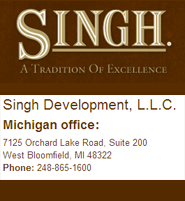|
|
|
|
|
|
Myrtle Beach is a coastal resort city in Horry County, South Carolina, United States. It is the de facto hub of both the Myrtle Beach metropolitan area and the Grand Strand, a complex of beach towns and barrier islands stretching from Little River to Georgetown, South Carolina.
Arising from a getaway for lumber workers from Conway, Myrtle Beach has rapidly developed into a major tourist destination in the Southeastern United States. As of 2006, the metro area had an estimated population of 299,353
Prior to the arrival of Europeans, the general area along Long Bay was inhabited by the Waccamaw Indians. The Waccamaw used the river for travel and fished along the shore around Little River. Waties Island, the primary barrier island along Long Bay, has evidence of burial and shell mounds, remains of the visiting Waccamaw.
The first settlers along Long Bay arrived in the late 17th century, attempting to extend the plantation system outward towards the ocean. Records are sparse from this period, with most of the recorded history pieced together from old land grants. They were met with mixed results, producing unremarkable quantities of indigo and tobacco. The coast's soil was sandy and most of the crops yields were of an inferior quality.
Prior to the American Revolution, the area along the future Grand Strand was essentially uninhabited. Several families received land grants along the coast, including most notably the Withers: John, Richard, William and Mary. They received an area around present-day Myrtle Swash, at the time known as Wither's Swash or the 8-Mile Swash. Another grant was given to James Minor, a barrier island named Minor Island, now Waties Island, off of the coast near Little River.
The first major route into the Myrtle Beach area, U.S. Route 17, ran from the North Carolina border to the Myrtle Beach area and turned west and north into Conway. The road was named in 1933, and US 17 was extended into South Carolina a year later. The road from Myrtle Beach to Conway was later renamed US 501 in a complicated route that roughly followed the current Broadway Street, Highway 15, Seaboard Street, Robert Grissom Parkway, Highway 544, and Business US 501.
By 1950, the current route of US 501 was created, in a more direct path from Aynor, South Carolina, through Conway, into Myrtle Beach proper. The road was widened to 4-lanes in stages westward from Myrtle Beach from the early 1960s through the mid-1970s to alleviate growing traffic congestion, with little development initially occurring along the new road. A wider fixed-span bridge over the Intracoastal Waterway was built in 1962, ushering in new and ongoing development west of the Waterway.
In 1975, the first phase of a bypass for US 17 (designated South Carolina Highway 317) was opened, allowing traffic to bypass King's Highway to the west from the northern city limits to US 501. Once the southern phase was completed from US-501 to Murrells Inlet in 1981, the road was redesignated as mainline US-17, with King's Highway becoming "US-17 Business".
Within the last decade, new roads have been created to ease congestion caused by the yearly influx of visitors. Most of these roads follow the Metro Loop Road Plan, organized in 1997 to better the traffic flow of Myrtle Beach. Some of the roads included have either been funded through RIDE I funding or through the City of Myrtle Beach.
RIDE II plans include the third phase of the Carolina Bays Parkway, a graded separation of Farrow Parkway and US 17 Bypass at the back gate of the former Air Force base, and many other projects. The county is currently debating where to allocate the $400 million generated through a proposed 1-cent sales tax. Other road projects in Horry County, including some in Aynor and Conway, will be included when voted upon.
Myrtle Beach will eventually be served by two interstates, Interstate 73 and Interstate 74. The North Myrtle Beach Connector will connect I-74 to downtown North Myrtle Beach.
The Myrtle Beach area is also served by the Myrtle Beach International Airport, located on the south side of town. The airport opened in 1976, and has served the Myrtle Beach area continuously. Hooters Air began operating out of Myrtle Beach in early 2003, only to be closed in early 2006 due to rising airline prices and the airline industry as a whole. DayJet serves 12 South Eastern cities with nonstop flights, and major airlines provide national and international service. There are also vestiges of the old Myrtle Beach Air Force Base.There is also a Omniflight helicopter base in Myrtle Beach that flies in surrounding areas throughout the Grand Strand.
Myrtle Beach is served by a single rail line which essentially runs parallel to Hwy 501 from Conway ending in downtown Myrtle Beach. The tracks are owned by Horry County, but were leased in 2000 to the Carolina Southern Railroad (CSRR) which operates on the line as the Waccamaw Coastline Railroad. Carolina Southern Railroad is a shortline rail operator running on less than 100 miles of rail at a maximum speed of 10 mph. It transports mostly freight brought to it from national rail operators like CSX. The company makes just one scheduled delivery per month into the City of Myrtle Beach.
|
|
|




|
|
|
|
|